There is no such thing as a straight line in the sales process. This is why converting a lead to a customer takes its own path and differs from company to company. It's critical for salespeople to comprehend and visualize a lead's path, whether they're selling to businesses or consumers; otherwise, they're shooting in the dark. This is accomplished through a sequence of processes that culminate in the sales funnel.
We will go over the following:
- What is Sales Funnel?
- Stages of Sales Funnel
- Benefits of Sales Funnel
- Things to do before Creating SaaS Sales Funnel
- How to Create SaaS Sales Funnel?
What is Sales Funnel?
A sales funnel is a process that depicts the route from a prospect's initial contact with you to their final purchase. It aids your sales team in determining where they need to follow up or adjust the sales process due to funnel drop-off.
A sales funnel, as its name implies, is largest at the top and narrowest at the bottom. Each level of the funnel moves your most qualified prospects forward, while those who aren't a good fit for your offer are dropped. A sales funnel is linked to the stages of the customer journey, which are divided into three categories: top, middle, and bottom.
It's easier to follow up with leads when you use a sales funnel. You may avoid the worst feeling in the world – missing a sales opportunity – by having an effective follow-up strategy.
What causes this to happen?
There are several causes for this:
- Disorganization
Leads become confused since you don't have your sales follow-up steps outlined (having ideas in your head doesn't constitute a plan). - Out-of-date Technology
You don't have the resources to make the procedure easier for yourself or the individual with whom you're conversing. When the procedure is unclear, a lead's desire to speak with you decreases.
Instead of missing out on sales you know would benefit from your product, you can follow leads and know precisely where they are in the process with an automated sales funnel. As a result, you'll be aware of the content customers require at each stage leading up to the most exciting moment – the conversion.
Stages of Sales Funnel
A sales funnel has four stages:
- Awareness
- Interest
- Decision
- Action
The acronym AIDA is used to refer to these stages in the sales funnel.
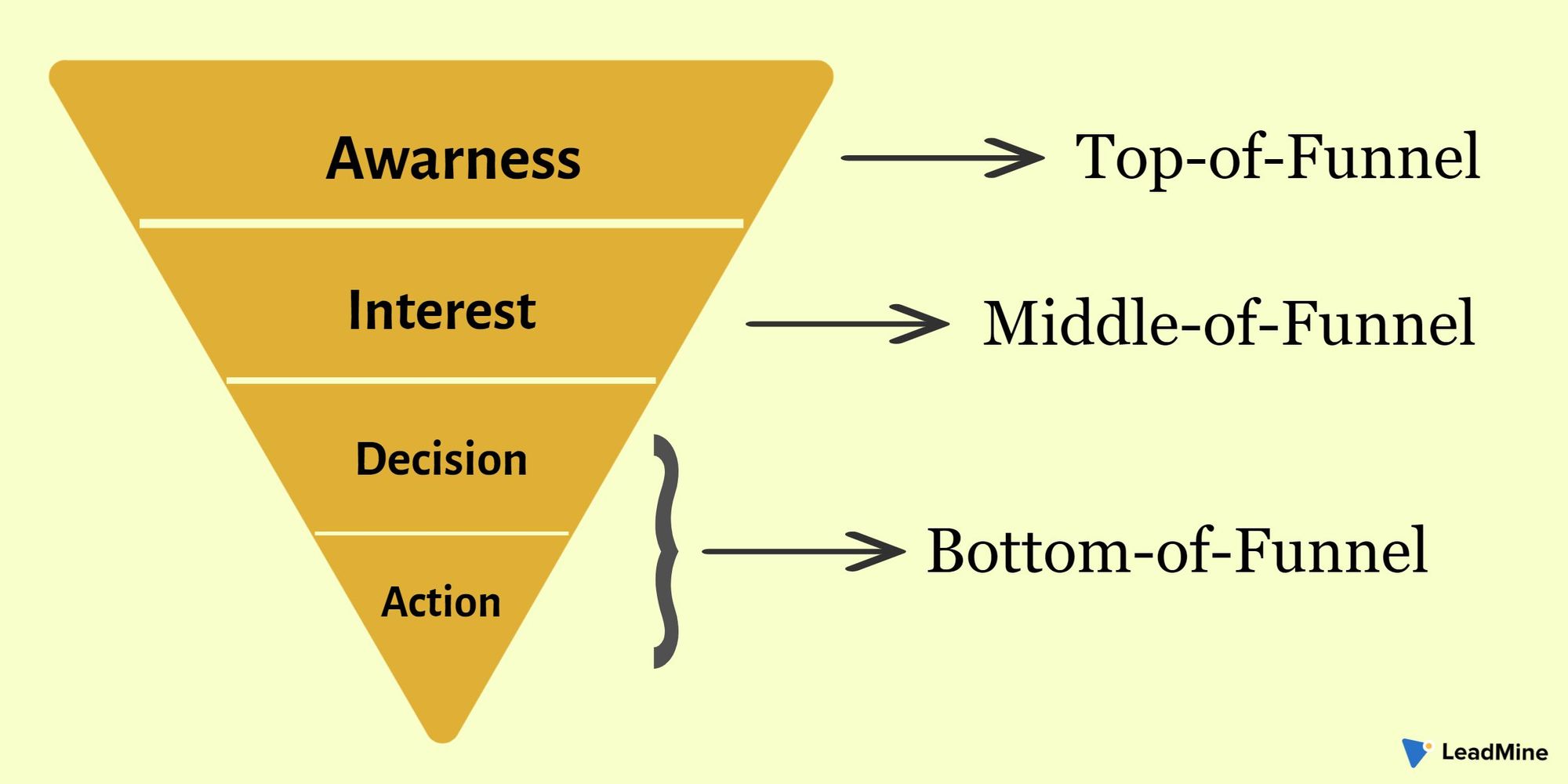
The four stages are categorized into 3 groups:
- Top-of-Funnel (Awareness)
- Middle-of-Funnel (Interest)
- Bottom-of-Funnel (Decision and Action)
#1 Awareness
When you generate brand awareness for your company, this is known as awareness. Curiosity and awareness are piqued by content that positions your company as a solution to a problem.
#2 Interest
When you build interest in the advantages of your offer, you've succeeded. The customer has learned a little about you and is actively interested in your product at this point. You must keep their attention peaked.
#3 Decision
This is the point at which a customer's journey shifts from wanting a repair to wanting you to be their fix. You've piqued their attention and held it, and the culmination of those steps has led them to choose you.
#4 Action
Your call-to-action (CTA) at the action stage prompts the customer to take action on their decision. This is where conversions happen, whether it's from a free trial to a membership, purchasing a product, or signing up for a subscription.
There are email warming sequences in each stage of the sales funnel with content like:
- Tutorials for the platform
- Product recommendations
- Personalized customer stories
Because most prospects aren't ready to buy from you at first glimpse, especially if they're just learning about you, this can take days or even weeks. As a result, each level of the funnel has many customer relationship-building "touches."
Benefits of Sales Funnel
Many SaaS companies avoid using sales funnels because they appear to be complicated. However, this is a blunder. Without a structured sales funnel, you're putting your brand in danger. To get all of these benefits for your business, use a smart, automated funnel.
- Retain Customers
Retention is critical for any organization, but it's especially critical for SaaS. Subscriptions and renewals underpin your whole business model. The retention of customers should be your first focus. Even if you have a little marketing budget, a well-designed sales funnel provides your team with the tools and processes they need to keep customers coming back. - Scalability
Scaling is a challenge for all businesses, but it's especially important for SaaS businesses. Implement a clear sales funnel instead of recruiting more and more employees to oversee your sales process.
Simply said, a sales funnel increases the efficiency of your sales team, reducing the need to hire additional full-time employees. - Lead Nurturing
Almost 80% of the leads your marketing team generates do not convert into subscribers. The issue is that sales do not follow up with these leads, not because of your marketing team or product.
Sales funnels assist you in creating a procedure for nurturing leads or guiding them through the sales process. - Improve Accuracy
Data is the bedrock of successful sales. However, there is a large margin for error when utilizing a manual system that relies on human input.
This leads to misunderstandings, which irritate customers and cause them to look for other options. You may greatly increase the accuracy of your sales team's information by using a sales funnel. - Streamline Onboarding
Some SaaS providers offer a straightforward onboarding procedure, while others require more steps.
Sales funnels direct your team to the next steps in the onboarding process, streamlining and simplifying it. This allows your team to delight customers and establishes a positive impression, which is crucial for long-term subscriber retention. - Measure What Matters
A sales funnel allows you to see past the vanity metrics and focus on the data that matters. It's difficult to determine how many leads you have, how many leads converted to subscribers, and what the average lifetime value of your subscribers is if you don't have a defined sales funnel.
Sales funnels assist you in determining what is important. This not only improves your cash flow but also keeps your customers coming back because you can utilize the data to improve the customer experience.
Things to do before Creating SaaS Sales Funnel
Let's go through some things to consider before building your first (or subsequent) SaaS sales funnel.
- Know Your Audience
Despite the fact that this step is self-evident, many businesses overlook it, and we understand why. When you create a fantastic product, you often believe to yourself, "Oh, absolutely, that's exactly what everyone will like." The product for everyone, on the other hand, is the product for nobody. Only target those who could need your product and can be quickly converted from leads to buyers. - Capture Attention
Whether you focus on organic growth or sponsored advertising, your goal is to gain more visibility. Create relevant and entertaining content, optimize it for search engines, and share it across all of your channels. Building brand awareness is a difficult task, but it is an essential aspect of your company's growth. - Create a Website
It might be as simple as a landing page or as complex as a well-designed website. It should ideally express your value propositions, key differentiators, product offerings, and pricing strategies. By the way, it's entirely up to you whether or not you want to make your pricing public. - Run Email Campaigns
Nurture your leads with high-quality material on a regular basis, but not too often. One or two emails every week should suffice. However, these two emails must be educational and entertaining in order to establish a relationship between the leads and your company.
How to Create SaaS Sales Funnel?
When it comes to SaaS sales, which are sometimes full of disputes and complexities, clarity is very vital. You can easily become disoriented without a set of processes to guide you!
We've divided the sales funnel into three stages, each with its own set of sub-stages.
Stage 1: Qualification
It's time for the SDR to start adding new prospects to the sales funnel after they've finished prospecting and qualifying. It all begins with your demonstration.
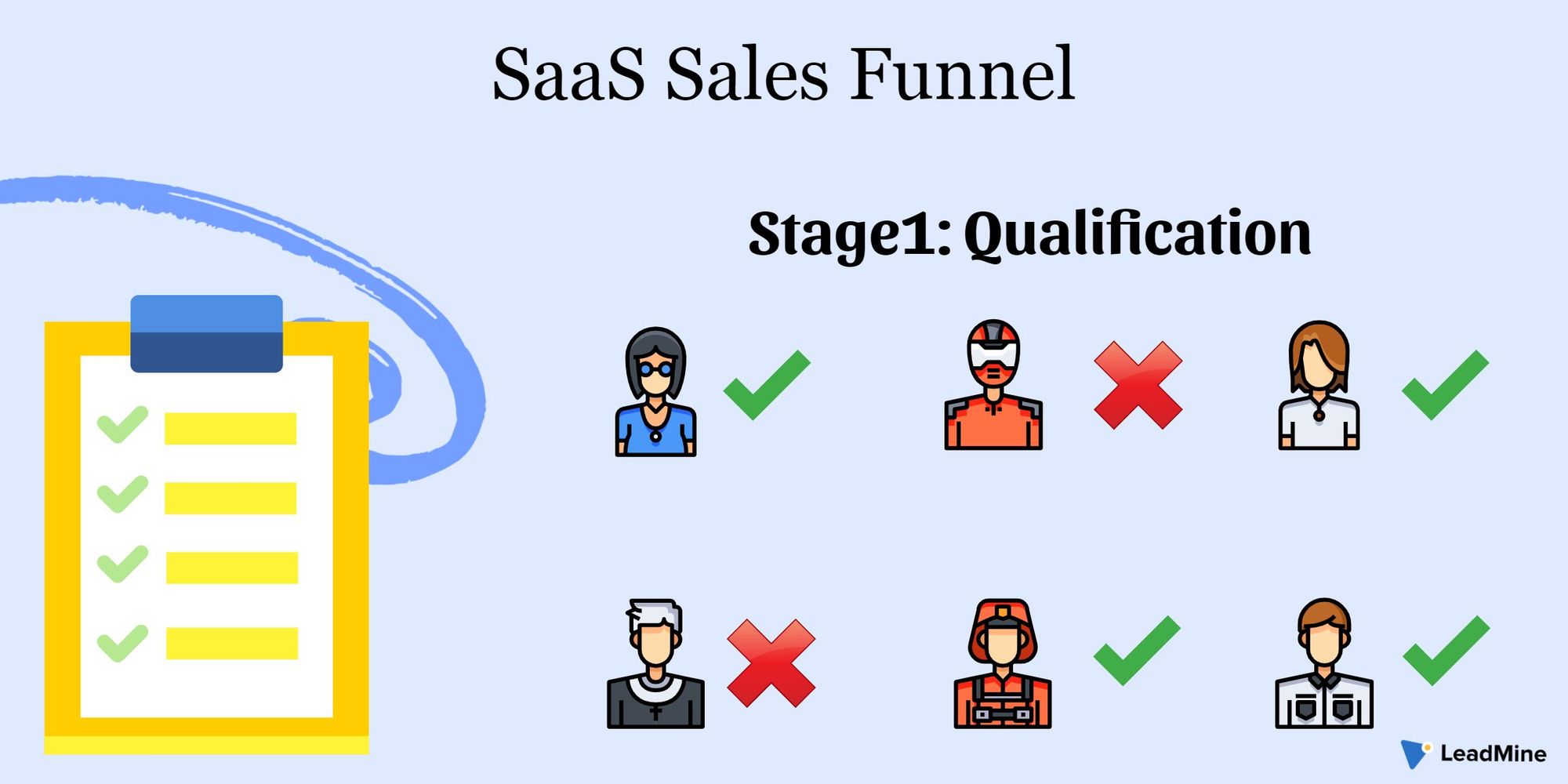
Demonstration
The initial demo is an opportunity for both the salesperson and the prospect to get to know each other and the product. Make sure you do your homework ahead of time, chat with the SDR, and start the conversation with a lot of questions.
This allows you to keep your attention on the prospect and their requirements. It implies you may just show them the qualities of the product that will benefit them. The more expertise you have, the more effectively you can present your offer in sales.
Expert Analysis
The knowledge of company employees is often overlooked until the contract begins, but it may be a big selling factor. Get your Customer Success team to share some insight into the value they'll add for the customer if your company has one.
LeadMine can achieve this for you by performing a TAM analysis on the prospect. One of our data experts will calculate all of the leads available in the prospect's target market. The prospect now knows they'll be in good hands when they sign up!
Trial
Giving the prospect a trial time with your platform, if possible, is beneficial. They should already have a fair idea of the advantages they could get from using the service, but their knowledge is still limited.
A trial enables potential customers to discover their own value in your software and put theory into reality.
Final Demonstration
The final demo is more of a question-and-answer session. If the prospect has read this far, they are almost certain to join up. This call is an opportunity for you to address any remaining questions and provide any more information that the prospect needs.
You should now have a decent sense of the advantages that prospects could get from using the platform, so let them have at it! Show them simply the characteristics that will improve the prospect's life.
You should not proceed if you do not perceive any meaningful benefit for the customer. It's critical to be a moral salesperson; attempting to force a sale that doesn't fit won't help you or the prospect.
Stage 2: Proposal
The crucial term to remember when sending a proposal is clarity. Ascertain that the prospect has all of the necessary information. This level should be both simple and quick.
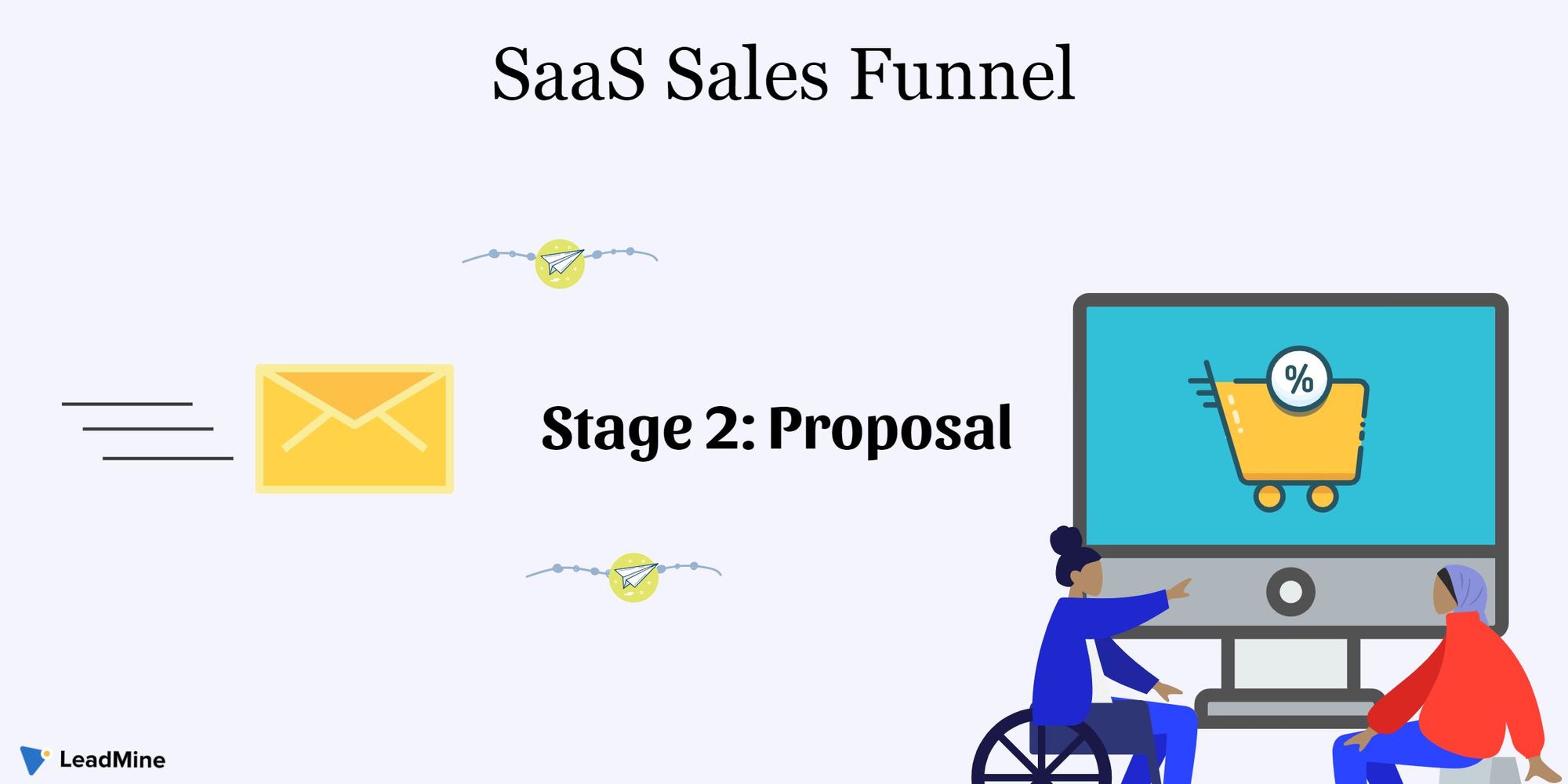
Submission of a Proposal
Initially, the proposal should be provided via email. This allows the prospect to consider the offer at their leisure. Calling a prospect to make a proposition can feel aggressive, and you don't want to alienate them at this point.
Send your idea, as well as any additional information that could be useful to them. Every conversation you have should add value, and this one is no exception.
Arrange a time for your next call to discuss the terms with this email.
Meeting to Discuss Proposal
A phone call is convenient, but a video call is even more so! The face-to-face engagement has a positive effect on prospects. They'll almost certainly have some inquiries or requests. Here are some pointers:
Prospects may require additional time to see a return on their investment, which a longer-term contract can provide.
The requests of the prospect are typically realistic. If that's the case, see what you can do to get it done. Consider alternatives if they aren't available.
Adding value to a deal that doesn't come at a high expense to your company will help you close the deal. This could be in the form of extra licenses or credits. It's a win-win situation if a little extra value sweetens the transaction.
It's time to send a contract once you've agreed on terms and conditions.
Stage 3: Contract
The important term in closing the sale is speed. Send a contract as soon as feasible after receiving the proposal. Keep the prospect waiting if you can help it; it shows inefficiency on your part.
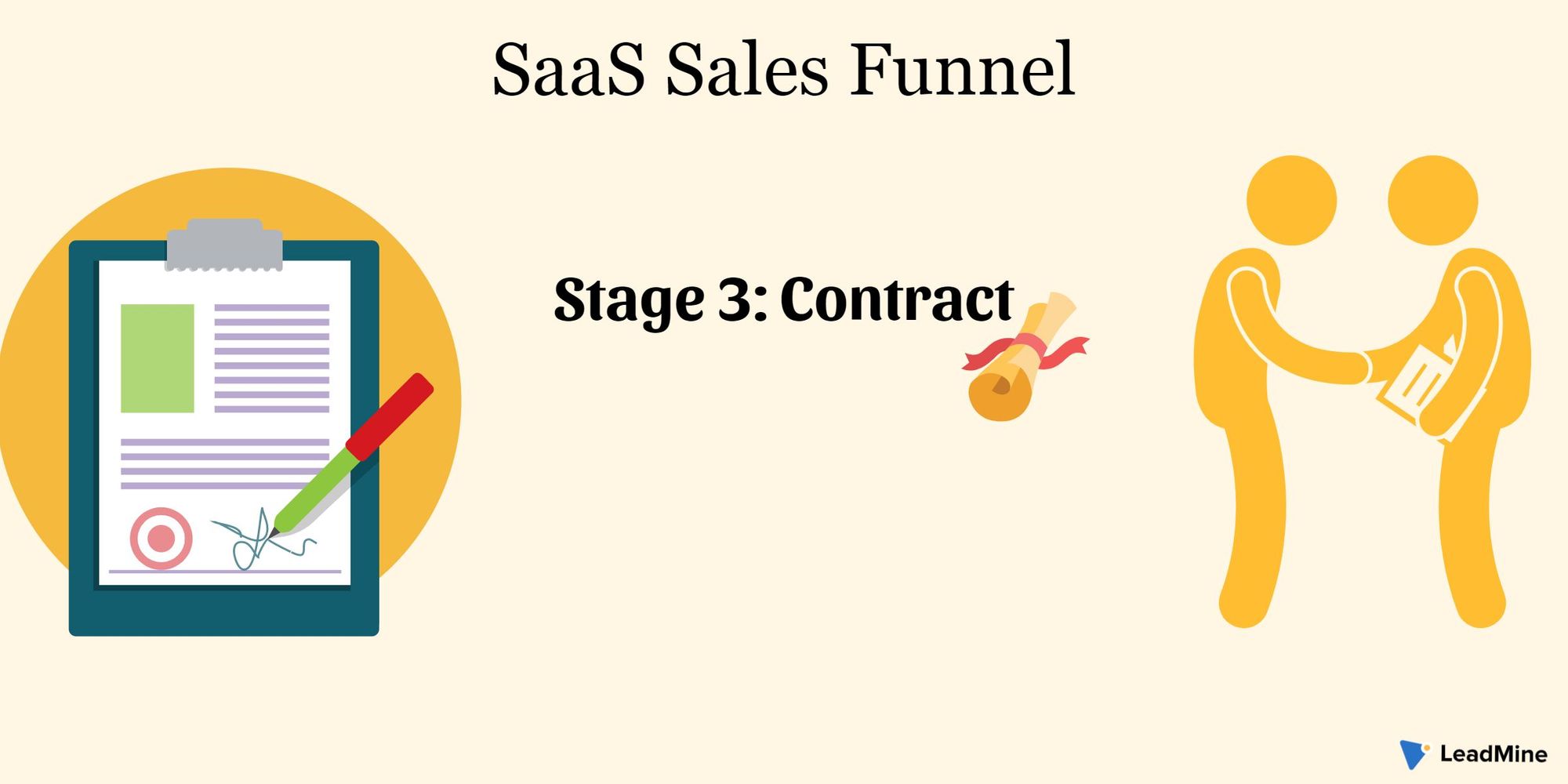
Review of the Contract
Send a summary of the contract along with it if necessary. Contracts are frequently riddled with legalese, and it might take a long time to figure out what matters. The following are the most crucial factors to consider:
- How much do I have to pay?
- How long do I have to pay?
- What exactly am I getting?
Although this should have been mentioned during the proposal stage, a fast recap won't harm.
Purchase
The simplest thing in the world is to sign a contract.

Because we use DocHub!
A long-winded signature process can be reduced to a few clicks with DocHub. This makes things easy for both you and the prospect, which is well worth the effort.
A simple signing process not only boosts conversion rate but also strengthens your relationship with your new client as they enter their first contract period.
Make sure your new customer is set up and ready to go before signing off. When the client no longer requires your assistance, the sales funnel comes to an end!
Finally!!!
The future of technology is SaaS models. However, this means that your sales process can no longer be mired in the Stone Age. Use sales funnels that are automated to help you achieve your sales goals.
You can always iterate on your sales funnel if you're building it from the ground up. You can always get more sophisticated, and you can use different methods to persuade prospects to buy.
LeadMine : Find Your Next Customer without Wasting Time
LeadMine is a lead generation platform used by all types of businesses. From over 200 million contacts, you may identify your target b2b leads as well as their email addresses.
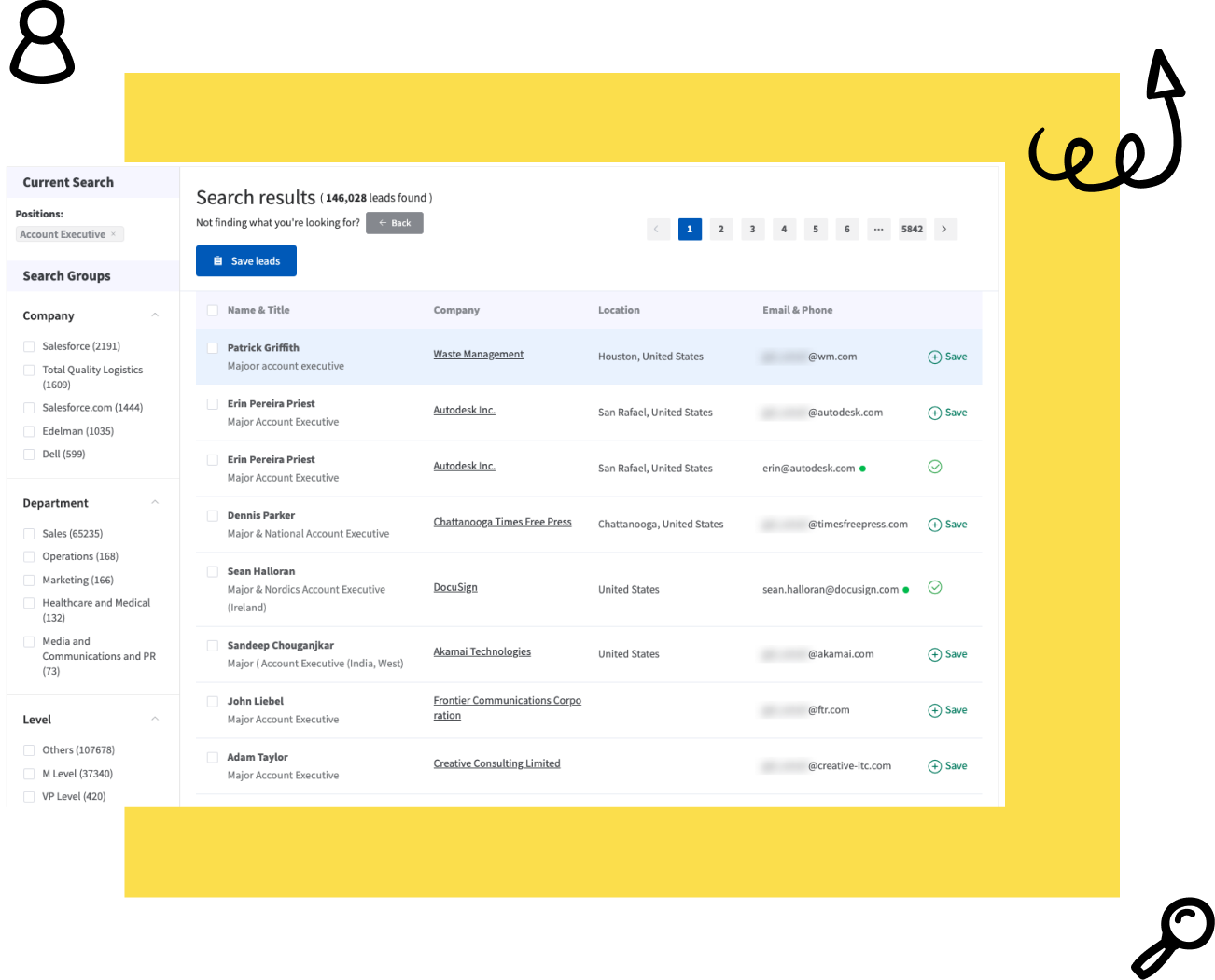
LeadMine is an extremely simple and handy application that can improve your marketing and sales processes. Its user-friendly interface, strong algorithms, real-time data, and email verification features save time that can be better spent on other tasks. The rich API solution can also check hundreds of email addresses in less than a minute. The powerful yet easy solution might be your ideal marketing and sales partner, helping your business grow.





